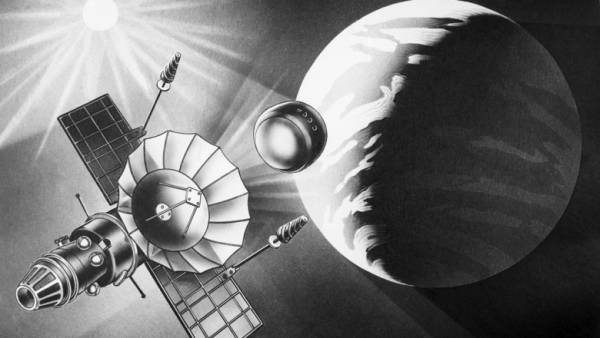The astronomer said, when the Earth will fall of the Soviet station “Venera”
MOSCOW, 6 Jul — RIA Novosti. Unsuccessfully launched to Venus by the Soviet station after half a century of wandering in space return to Earth and fall on it in coming years, told RIA Novosti the astronomer, the historian of Astronautics, the author of a book about the Soviet missions to Venus Pavel Shubin.

Twenty-seventh March 1972 went into space station “Venera-8”. March 31, the Soviet Union attempted to launch her “twin”, but at the stage of the booster, which from earth orbit was supposed to bring a station on an interplanetary trajectory, a failure has occurred and the engine shut down. Station with the upper stage remained in an elongated orbit, revolving around the Earth.
Not to inform about the failure, instead of the name “Venera-9” device is called “Kosmos-482”.
In turn, the “Venera-8” has landed on the surface of Venus and for the first time in the world gave scientific information about its surface.
Station “Kosmos-482” come back to us in the next 4-7 years.Paul Supinator books about the Soviet missions to Venus
According to him, after the launch of the station together with the upper stage remained in orbit with the parameters of 220 km 9800 km, and over the past half century has lost about 7400 km, reducing the apogee (the highest point of the orbit) up to 2400 km.
Shubin analyzed data on the state of the spacecraft’s orbit over the years, as well as the state of the Earth’s atmosphere and discovered that soon reducing the height of the orbit of the station only to accelerate. “When approaching the Ground station reduces the period of treatment, she increasingly comes into the atmosphere with the passage of the perigee that causes more rapid fall of the climax,” — said the expert.
According to the constructed schedule, the fall of the station to Earth will occur approximately in 2023-2025 years. It is difficult to accurately determine due to the unknown orientation of the station.
While the planet’s surface can reach at least 500 kg of metal is the mass lander. Migratory station weighs nearly 700 lbs. Plus the weight of the booster.

“The fact that this station is very durable lander. One of the most durable in the history of ever sent into space. It is able to withstand atmospheric pressure to 100 atmospheres, designed to enter the atmosphere of Venus with the second space velocity, peak g forces of up to 300g,” — said Shubin.
“At the entrance of the station into the Earth’s atmosphere will be much more mild conditions. As a result, the apparatus to the surface of the Earth is guaranteed to reach. Moreover, even if it sinks, it will be able to withstand water pressure at depths of a kilometer,” — said the expert.
According to him, it is not clear where to land the lander, but it will happen between 52 degrees North and 52 degrees South latitude.
“It is very interesting to find it. In addition to a clear historical-archaeological interest, there is also scientific interest. The Earth had not yet returned the device after half a century spent in space. Very interesting to see what impact such a long flight for the materials contained in the descent module,” said Shubin.
The Soviet Union became the first country in the world that launched a spacecraft to Venus, who carried out a soft landing on the planet’s surface, the received panoramic images of the surface, carried out the study of the atmosphere probe-balloon. All domestic program of study Venus was carried out by the automatic interplanetary station (AMS) series “Venus”, “ZOND” and “VEGA”. After more than 30 years, Russia again decided to return to the study of Venus. NPO Lavochkin, together with a number of international partners, develops new AMC “Venera-D”. Currently, the specialists of NPO Lavochkin formed the design of spacecraft to study Venus, which will include orbital and landers, atmospheric probes.